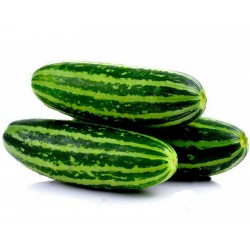Menu
-
MenuZpět
- Home
-
Kategorie
-
-
Kategorie
-
Zeleninová semínka
-
Odrůdy podle země
- Odrůdy z Arménie
- Odrůdy od BiH
- Odrůdy z Chorvatska
- Odrůdy z Francie
- Odrůdy z Německa
- Varieties from Greece
- Varieties from Hungary
- Odrůdy z Indie
- Varieties from Italy
- Odrůdy z Japonska
- Odrůdy ze Severní Makedonie
- Varieties from Peru
- Varieties from Russia
- Varieties from Serbia
- Odrůdy ze Slovinska
- Varieties from Spain
- Varieties from Thailand
- Odrůdy z Turecka
- Varieties from USA
- Semena rajčat
- Semena kukuřice
- Tykev rodina
- Rodina fazole
- Semena okurky
- Semena papriky
- Rodina mrkve
- Cibulová rodina
- Salátová semínka
- Rodina brambor
- Rodina zelí
- Semena ředkvičky
- Rodina z červené řepy
- Semena melounu
- Melounová semínka
- Semena květáku
- Slunečnicová rodina
-
Odrůdy podle země
- Ovocná semínka
- Chili semínka
- Semena léčivých bylin
- Semena horolezeckých rostlin
- Stromy - keř - semena
- Palmová semínka
- Semena okrasných trav
- Semena tabáku
-
Zeleninová semínka
-
-
-
-
- NOVÉ PRODUKTY
- Dodání - platba
- Vytvořit účet
- FAQ
Last Product Reviews
These peppers came all the way from eastern Europe and took a while at no f...
By
 Fitim Berani on 21/09/2023
Fitim Berani on 21/09/2023
Verified Purchase
Last customers
- Tanja, Beograd, Serbia
- Alaa, Alwajh, Saudi Arabia
- ionescu, valu lui traian, Romania
- Lasse, 2900, Norway
- Pete, Cleves, United States
- Stef, Waalwijk, Netherlands
- Sonia, Minervino di Lecce, Italy
- Adrian, Ingolstadt, Germany
- CORINNE, NOTRE DAME DE LONDRES, France
- Dušan, KRAVANY NAD DUNAJOM, Slovakia
- Arno, Ehrenkirchen, Germany
- Costas, LARNACA , Cyprus
- Fulvio francesco, Santa Domenica Talao, Italy
- william, Dun, France
- Aymeric , Saint tricat, France
- Ricard, Sant Celoni, Spain
- Maureen , Enniscorthy Co Wexford , Ireland
- Paul, St. Vigil in Enneberg (BZ), Italy
- Ricardo jorge , Viseu , Portugal
- Radosav, Kragujevac, Serbia
- Sylvie, Neyruz, Switzerland
- Julien, Scionzier, France
- Zoran, Vinca, Serbia
- Josef, Hochdorf-Assenheim, Germany
- Davide, London, United Kingdom
- Kimberly, Victoria, Gozo, Malta
- Saša , Beograd, Serbia
- Ewa, Galway, Ireland
- Ioannis , Kato Achaia, Greece
- Samuele, Milano, Italy
Počet produktů: 383
Seřadit podle:
Zobrazení 37-48 z 383 položek

Best seller product
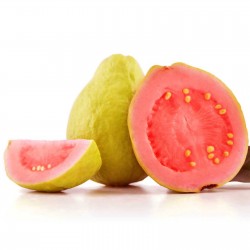
Common guava Seeds (Psidium...
Cena
2,15 €
SKU: V 38
Seeds Gallery Com,
5/
5
<h2><strong>Common guava, Yellow guava, Lemon guava Seeds (Psidium guajava)</strong></h2>
<h2><span style="color: #ff0000;">Price for Package of 5 or 10 seeds.</span></h2>
<p>Widely planted and naturalized in its native tropical America and in many other warm regions of the world, this tender evergreen shrub or small tree is prized for its delicious yellow-skinned, pink- or yellow-fleshed fruits, which are wonderful fresh and in preserves and juices. Ripening from fall into winter, the fragrant, round to pear-shaped, apple-sized, seedy fruits are preceded in early summer by mildly fragrant white flowers that have a boss of central stamens. Plants are self-fruitful, requiring no companion plants for fruit set. Attractive ribbed elliptic leaves are copper-tinged upon emergence. The flaking copper-colored bark adds further all-season interest.</p>
<p>This warmth-loving plant prefers ample sun and well-drained acidic to alkaline soil. It needs warm but not overly hot summers – give it partial shade if necessary to protect it from excessive heat. Use it in tropical gardens or in a warm humid greenhouse. It is considered a noxious exotic weed in Hawaii and other areas. (SOURCE: learn2grow.com)</p>
<p>The guava seems indiscriminate as to soil, doing equally well on heavy clay, marl, light sand, gravel bars near streams, or on limestone; and tolerating a pH range from 4.5 to 9.4. It is somewhat salt-resistant. Good drainage is recommended but guavas are seen growing spontaneously on land with a high water table–too wet for most other fruit trees.</p>
<table border="1" cellspacing="0" cellpadding="0">
<tbody>
<tr>
<td colspan="2" valign="top" width="100%">
<p><span style="color: #008000;"><strong>Sowing Instructions</strong></span></p>
</td>
</tr>
<tr>
<td valign="top" nowrap="nowrap">
<p><span style="color: #008000;"><strong>Propagation:</strong></span></p>
</td>
<td valign="top">
<p><span style="color: #008000;">Seeds</span></p>
</td>
</tr>
<tr>
<td valign="top" nowrap="nowrap">
<p><span style="color: #008000;"><strong>Pretreat:</strong></span></p>
</td>
<td valign="top">
<p><span style="color: #008000;">soak in water for 24 hours</span></p>
</td>
</tr>
<tr>
<td valign="top" nowrap="nowrap">
<p><span style="color: #008000;"><strong>Stratification:</strong></span></p>
</td>
<td valign="top">
<p><span style="color: #008000;">0</span></p>
</td>
</tr>
<tr>
<td valign="top" nowrap="nowrap">
<p><span style="color: #008000;"><strong>Sowing Time:</strong></span></p>
</td>
<td valign="top">
<p><span style="color: #008000;">all year round</span></p>
</td>
</tr>
<tr>
<td valign="top" nowrap="nowrap">
<p><span style="color: #008000;"><strong>Sowing Depth:</strong></span></p>
</td>
<td valign="top">
<p><span style="color: #008000;">0.5 cm</span></p>
</td>
</tr>
<tr>
<td valign="top" nowrap="nowrap">
<p><span style="color: #008000;"><strong>Sowing Mix:</strong></span></p>
</td>
<td valign="top">
<p><span style="color: #008000;">Coir or sowing mix + sand or perlite</span></p>
</td>
</tr>
<tr>
<td valign="top" nowrap="nowrap">
<p><span style="color: #008000;"><strong>Germination temperature:</strong></span></p>
</td>
<td valign="top">
<p><span style="color: #008000;">25 ° C +</span></p>
</td>
</tr>
<tr>
<td valign="top" nowrap="nowrap">
<p><span style="color: #008000;"><strong>Location:</strong></span></p>
</td>
<td valign="top">
<p><span style="color: #008000;">bright + keep constantly moist not wet</span></p>
</td>
</tr>
<tr>
<td valign="top" nowrap="nowrap">
<p><span style="color: #008000;"><strong>Germination Time:</strong></span></p>
</td>
<td valign="top">
<p><span style="color: #008000;">1-3 months</span></p>
</td>
</tr>
<tr>
<td valign="top" nowrap="nowrap">
<p><span style="color: #008000;"><strong>Watering:</strong></span></p>
</td>
<td valign="top">
<p><span style="color: #008000;">Water regularly during the growing season</span></p>
</td>
</tr>
<tr>
<td valign="top" nowrap="nowrap">
<p><span style="color: #008000;"><strong> </strong></span></p>
</td>
<td valign="top">
<p><br><span style="color: #008000;"><em>Copyright © 2012 Seeds Gallery - Saatgut Galerie - Galerija semena. </em><em>All Rights Reserved.</em><em></em></span></p>
<p><span style="color: #008000;"><em> </em></span></p>
</td>
</tr>
</tbody>
</table><script src="//cdn.public.n1ed.com/G3OMDFLT/widgets.js"></script>
V 38 (5 S)

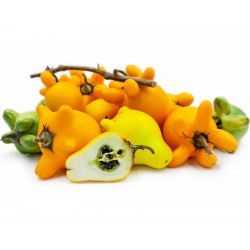
Nipplefruit Seeds - Cow's...
Cena
2,25 €
SKU: V 39
Seeds Gallery Com,
5/
5
<h2><strong>Nipplefruit Seeds - Cow's udder (Solanum mammosum)</strong></h2>
<h2><span style="color:#ff0000;"><strong>Price for Package of 10 seeds.</strong></span></h2>
<p><em><strong>Solanum mammosum</strong></em> is commonly known as <strong>nipplefruit</strong>,<sup>[1]</sup> <strong>fox head</strong>,<sup>[2]</sup> <strong>cow's udder</strong>, or <strong>apple of Sodom</strong>, is an inedible Pan-American tropical fruit.<sup>[3]</sup> The plant is grown for ornamental purposes, in part because of the distal end of the fruit's resemblance to a human breast, while the proximal end looks like a cow's udder. It is an annual in the family Solanaceae, and part of the genus <em>Solanum</em>, making the plant a relative of the eggplant, tomato, and potato. This poisonous fruit is native to South America, but has been naturalized in Southern Mexico, Greater Antilles, Central America, and the Caribbean. The plant adapts well to most soils, but thrives in moist, loamy soil.</p>
<div>
<div><img alt="Nipplefruit Seeds - Cow's udder (Solanum mammosum)" src="https://upload.wikimedia.org/wikipedia/commons/thumb/b/be/Solanum_mammosum1.jpg/220px-Solanum_mammosum1.jpg" width="220" height="165" style="border-width:1px;" title="Nipplefruit Seeds - Cow's udder (Solanum mammosum)" /><div>
<div></div>
Solanum Mammosum flower and stem</div>
</div>
</div>
<p>The plant has thin simple leaves occurring in alternating branching patterns with prominent venation. Hairy thorns cover the stem and branches of the plant. The inflorescencecontains five to eight purple elongating buds. The fruit is a berry type, and has waxy yellow skin with reddish-brown seeds. The plant is propagated by the distribution of seeds.</p>
<h2>Uses</h2>
<div>
<div><img alt="Nipplefruit Seeds - Cow's udder (Solanum mammosum)" src="https://upload.wikimedia.org/wikipedia/commons/thumb/f/fc/Solanum_mammosum_at_Lunar_New_Year_Fair_HK_2015.jpg/220px-Solanum_mammosum_at_Lunar_New_Year_Fair_HK_2015.jpg" width="220" height="165" style="border-width:1px;" title="Nipplefruit Seeds - Cow's udder (Solanum mammosum)" /><div>
<div></div>
Solanum mammosum sold at a Chinese New Year fair in Hong Kong</div>
</div>
</div>
<p>Folkloric uses of the plant range from treating asthma with a root decoction, to curing athlete's foot by rubbing leaf juices on the skin.<sup>[<em><span title="This claim needs references to reliable sources. (April 2017)">citation needed</span></em>]</sup> Although these medical uses are not widely practiced and vary through cultures, they are an explanation for why this plant has been cultivated.</p>
<p>The fruit has been embraced by Eastern cultures. It is primarily used as decorative foliage for religious and festival floral arrangements in Asia. The fruit is imported for the creation of Chinese New Year trees, due to their golden colored fruit and the belief that the five "fingers" on the fruit represent longevity for the family. In Chinese culture, the plant is known as <em>five fingered eggplant</em> (五指茄) and in Japan it is known as <em>Fox Face</em> (フォックスフェイス).</p>
<p>The juice of the fruit can be used as a detergent in place of a washing powder, making it similar to the soap nut. The Kofan People of Columbia and Ecuador use the plant as an insect repellent, primarily against cockroaches. The fruit works as a repellent because of the toxicity of steroidal glycoalkaloid.<sup>[4]</sup></p>
<p>Although the fruit is poisonous, it can be cooked and eaten like a vegetable when it is unripe.<sup>[<em><span title="This claim needs references to reliable sources. (April 2017)">citation needed</span></em>]</sup> It provides a good source of calcium, phosphorus, iron and vitamin B.<sup>[4]</sup>One way that the fruit can be prepared is boiling the whole fruit and drinking the juices once boiled. In the Philippines, not only is the fruit eaten, but the leaves are also prepared as a tea considered to be anodyne,<sup>[<em><span title="This claim needs references to reliable sources. (April 2017)">citation needed</span></em>]</sup> a mild narcotic.</p>
V 39

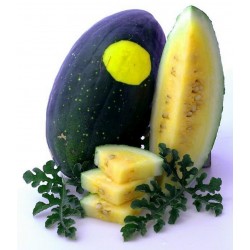
Yellow Watermelon Seeds...
Cena
1,95 €
SKU: V 40
Seeds Gallery Com,
5/
5
<h2><strong>Yellow Watermelon Seeds - Moon and Stars</strong></h2>
<h2><strong style="color: #ff0000;">Price for Package of<strong> 5 or 20 seeds.</strong></strong></h2>
<p>USDA Certified Organic. 90 days. Early 1900s GA family heirloom. Introduced 1987 by SESE. Years ago, a melon of this description was routinely shipped from Bermuda to some Southern states around Christmas time. Good flavor, the sweetest Moon and Stars variety. 15-35 lb fruits. Has some tolerance to disease and drought. Rinds has many small yellow stars and some moons. To serve, try halving melons and scooping out the insides using a melon ball scoop. Scallop the edges and fill with melon balls of red and yellow watermelon, muskmelon, and assorted fruit. </p>
<div>
<table style="width: 708px;" cellspacing="0" cellpadding="0" border="1">
<tbody>
<tr>
<td colspan="2" valign="top" style="width: 707px;">
<p><span style="color: #008000;"><strong>Sowing Instructions</strong></span></p>
</td>
</tr>
<tr>
<td valign="top" nowrap="nowrap" style="width: 178px;">
<p><span style="color: #008000;"><strong>Propagation:</strong></span></p>
</td>
<td valign="top" style="width: 529px;">
<p><span style="color: #008000;">Seeds</span></p>
</td>
</tr>
<tr>
<td valign="top" nowrap="nowrap" style="width: 178px;">
<p><span style="color: #008000;"><strong>Pretreat:</strong></span></p>
</td>
<td valign="top" style="width: 529px;">
<p><span style="color: #008000;">Damage the membranes of the seed. But not the sprouts! See Picture 5</span></p>
<p><span style="color: #008000;"> </span></p>
</td>
</tr>
<tr>
<td valign="top" nowrap="nowrap" style="width: 178px;">
<p><span style="color: #008000;"><strong>Stratification:</strong></span></p>
</td>
<td valign="top" style="width: 529px;">
<p><span style="color: #008000;">0</span></p>
</td>
</tr>
<tr>
<td valign="top" nowrap="nowrap" style="width: 178px;">
<p><span style="color: #008000;"><strong>Sowing Time:</strong></span></p>
</td>
<td valign="top" style="width: 529px;">
<p><span style="color: #008000;">all year round</span></p>
</td>
</tr>
<tr>
<td valign="top" nowrap="nowrap" style="width: 178px;">
<p><span style="color: #008000;"><strong>Sowing Depth:</strong></span></p>
</td>
<td valign="top" style="width: 529px;">
<p><span style="color: #008000;">0,5-1 cm</span></p>
</td>
</tr>
<tr>
<td valign="top" nowrap="nowrap" style="width: 178px;">
<p><span style="color: #008000;"><strong>Sowing Mix:</strong></span></p>
</td>
<td valign="top" style="width: 529px;">
<p><span style="color: #008000;">Coir or sowing mix + sand or perlite</span></p>
</td>
</tr>
<tr>
<td valign="top" nowrap="nowrap" style="width: 178px;">
<p><span style="color: #008000;"><strong>Germination temperature:</strong></span></p>
</td>
<td valign="top" style="width: 529px;">
<p><span style="color: #008000;">20 ° C</span></p>
</td>
</tr>
<tr>
<td valign="top" nowrap="nowrap" style="width: 178px;">
<p><span style="color: #008000;"><strong>Location:</strong></span></p>
</td>
<td valign="top" style="width: 529px;">
<p><span style="color: #008000;">bright + keep constantly moist not wet</span></p>
</td>
</tr>
<tr>
<td valign="top" nowrap="nowrap" style="width: 178px;">
<p><span style="color: #008000;"><strong>Germination Time:</strong></span></p>
</td>
<td valign="top" style="width: 529px;">
<p><span style="color: #008000;">1-6 weeks</span></p>
</td>
</tr>
<tr>
<td valign="top" nowrap="nowrap" style="width: 178px;">
<p><span style="color: #008000;"><strong>Watering:</strong></span></p>
</td>
<td valign="top" style="width: 529px;">
<p><span style="color: #008000;">Water regularly during the growing season</span></p>
</td>
</tr>
<tr>
<td valign="top" nowrap="nowrap" style="width: 178px;">
<p><span style="color: #008000;"><strong> </strong></span></p>
</td>
<td valign="top" style="width: 529px;">
<p align="center"><span style="font-size: 8pt; color: #008000;"><strong><em>Copyright © 2012</em></strong></span></p>
<p align="center"><span style="font-size: 8pt; color: #008000;"><strong><em>Seeds Gallery - Saatgut Galerie – Galerija semena.</em></strong></span></p>
<p align="center"><span style="color: #008000;"><span style="font-size: 8pt;"><strong><em>All Rights Reserved.</em></strong></span><strong></strong></span></p>
</td>
</tr>
</tbody>
</table>
</div>
V 40 (5 S)

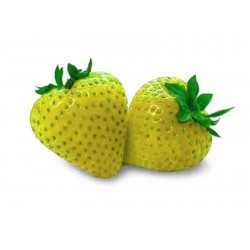
Strawberry Seeds Yellow Wonder
Cena
1,50 €
SKU: V 1 Y
Seeds Gallery Com,
5/
5
<!DOCTYPE html>
<html>
<head>
<meta http-equiv="Content-Type" content="text/html; charset=UTF-8" />
</head>
<body>
<h2><strong>Strawberry Seeds Yellow Wonder</strong></h2>
<h2><span style="color: #ff0000;"><strong>Price for Package of 10 , 50 , 100 seeds.</strong></span></h2>
<div>A compact, non trailing variety giving high yields of firm, sweet, aromatic fruit of an attractive yellow colour. The yellow fruit do not attract birds, thus bird damage is much less of a problem than with traditional red strawberries. Very easy to grow. Prefers full sun or part-sun.
<div>
<table border="1" cellspacing="0" cellpadding="0">
<tbody>
<tr>
<td colspan="2" valign="top" width="100%">
<p align="center"><span style="color: #008000;"><strong>Sowing Instructions</strong></span></p>
</td>
</tr>
<tr>
<td valign="top" nowrap="nowrap">
<p align="center"><span style="color: #008000;"><strong>Propagation:</strong></span></p>
</td>
<td valign="top">
<p align="center"><span style="color: #008000;">Seeds</span></p>
</td>
</tr>
<tr>
<td valign="top" nowrap="nowrap">
<p align="center"><span style="color: #008000;"><strong>Pretreat:</strong></span></p>
</td>
<td valign="top">
<p align="center"><span style="color: #008000;">0</span></p>
</td>
</tr>
<tr>
<td valign="top" nowrap="nowrap">
<p align="center"><span style="color: #008000;"><strong>Stratification:</strong></span></p>
</td>
<td valign="top">
<p align="center"><span style="color: #008000;">0</span></p>
</td>
</tr>
<tr>
<td valign="top" nowrap="nowrap">
<p align="center"><span style="color: #008000;"><strong>Sowing Time:</strong></span></p>
</td>
<td valign="top">
<p align="center"><span style="color: #008000;">all year round</span></p>
</td>
</tr>
<tr>
<td valign="top" nowrap="nowrap">
<p align="center"><span style="color: #008000;"><strong>Sowing Depth:</strong></span></p>
</td>
<td valign="top">
<p align="center"><span style="color: #008000;">Needs Light to germinate! Just sprinkle on the surface of the substrate + gently press</span></p>
</td>
</tr>
<tr>
<td valign="top" nowrap="nowrap">
<p align="center"><span style="color: #008000;"><strong>Sowing Mix:</strong></span></p>
</td>
<td valign="top">
<p align="center"><span style="color: #008000;">Coir or sowing mix + sand or perlite</span></p>
</td>
</tr>
<tr>
<td valign="top" nowrap="nowrap">
<p align="center"><span style="color: #008000;"><strong>Germination temperature:</strong></span></p>
</td>
<td valign="top">
<p align="center"><span style="color: #008000;">20-25°C</span></p>
</td>
</tr>
<tr>
<td valign="top" nowrap="nowrap">
<p align="center"><span style="color: #008000;"><strong>Location:</strong></span></p>
</td>
<td valign="top">
<p align="center"><span style="color: #008000;">bright + keep constantly moist not wet</span></p>
</td>
</tr>
<tr>
<td valign="top" nowrap="nowrap">
<p align="center"><span style="color: #008000;"><strong>Germination Time:</strong></span></p>
</td>
<td valign="top">
<p align="center"><span style="color: #008000;">1 - 8 weeks</span></p>
</td>
</tr>
<tr>
<td valign="top" nowrap="nowrap">
<p align="center"><span style="color: #008000;"><strong>Watering:</strong></span></p>
</td>
<td valign="top">
<p align="center"><span style="color: #008000;">Water regularly during the growing season</span></p>
</td>
</tr>
<tr>
<td valign="top" nowrap="nowrap"> </td>
<td valign="top">
<p align="center"><br /><span style="color: #008000;"><em>Copyright © 2012 Seeds Gallery - Saatgut Galerie - Galerija semena. </em><em>All Rights Reserved.</em></span></p>
</td>
</tr>
</tbody>
</table>
<p> </p>
</div>
</div>
</body>
</html>
V 1 Y (10 S)

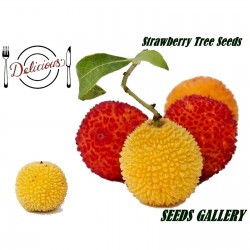
Semena Planika obecná...
Cena
1,65 €
SKU: V 42
Seeds Gallery Com,
5/
5
<!DOCTYPE html>
<html>
<head>
<meta http-equiv="Content-Type" content="text/html; charset=UTF-8" />
</head>
<body>
<h2><strong>Semena Planika obecná (Arbutus unedo)</strong></h2>
<h2><span style="color: #ff0000;"><strong>Cena za balení 10 semen.</strong></span></h2>
<p>Planika dorůstá výšky 4 až 10 metrů. Kmen je červenohnědý pokrytý dlouhými šedavými šupinami. Větve jsou šedé a větvičky červenohnědé, bohatě obrostlé listy, přičemž na nich mohou růst žláznaté chloupky. Listy jsou neopadavé, kožovité s velikostí 8 x 3 cm. Mají vejčitý tvar, připomínající listy<span> </span>vavřínu. Na lícní straně jsou zářivě zelené, zatímco na rubové straně mají matný odstín. Okraje<span> </span>listové čepele<span> </span>jsou zoubkovité až pilovitě. Listová stopka měří 7 až 8 milimetrů. Květenství má tvar převislého<span> </span>hroznu<span> </span>a obsahuje až 40 květů,<span> </span>listeny, které květenství obklopují, jsou oválně-kopinaté a načervenalé barvy. Pětičetný<span> </span>kalich<span> </span>měří 1 až 1,5 mm, jeho krátké<span> </span>kališní lístky<span> </span>trojúhelníkovitého tvaru jsou na bázi srostlé.<span> </span>Koruna<span> </span>květu je baňkovitá, měří 7 až 8 mm, má bílou až nažloutlou barvu a po vyschnutí opadává. Tvoří ji 5 na konci zahnutých okvětních lístků, které jsou porostlé jemnými chloupky. Uvnitř květu se nachází 10 uzavřených tyčinek s ochmýřenými nitkami, jejichž spodní část je ztluštělá.<span> </span>Prašníky<span> </span>jsou načervenalé, rozdělené na dva pylové váčky, ze kterých se po prasknutí uvolňuje pyl. Semeník je svrchní pětičetný a bez chloupků, čnělka je rovná a mírně kuželovitá s rýhami vedoucími po celé délce.<span> </span>Plod<span> </span>planiky tvoří bradavičnatá bobule o velikosti 7 až 10 mm, která má v době zralosti živě červenou barvu. V každé z pěti komor plodu se nachází několik drobných hranatých semen hnědé barvy.</p>
<h2><span id="Roz.C5.A1.C3.AD.C5.99en.C3.AD_a_v.C3.BDskyt"></span><span class="mw-headline" id="Rozšíření_a_výskyt">Rozšíření a výskyt</span></h2>
<p>Vyskytuje se ve<span> </span>Středomoří, v severní Africe a na celém<span> </span>Pyrenejském poloostrově. Lze ji také najít na západě<span> </span>Francie<span> </span>a<span> </span>Irska. Přirozeně se vyskytuje ve<span> </span>středomořských křovinných porostech<span> </span>a stálezelených lesích, především v roklinách a v skalních stěnách soutěsek vytvořených vodními toky. Vyskytuje se od úrovně moře až do výšky 800–1200 metrů nad mořem. Daří se jí v dobře odvodněné jílovité půdě. Požárům odolává díky kořenovým výmladkům</p>
<h2><span id="P.C4.9Bstov.C3.A1n.C3.AD_a_vyu.C5.BEit.C3.AD"></span><span class="mw-headline" id="Pěstování_a_využití">Pěstování a využití</span></h2>
<div class="thumb tright">
<div class="thumbinner"><img alt="Semena Planika obecná (Arbutus unedo)" src="https://upload.wikimedia.org/wikipedia/commons/thumb/c/cb/Arbouses.jpg/220px-Arbouses.jpg" decoding="async" width="220" height="216" class="thumbimage" srcset="//upload.wikimedia.org/wikipedia/commons/thumb/c/cb/Arbouses.jpg/330px-Arbouses.jpg 1.5x, //upload.wikimedia.org/wikipedia/commons/thumb/c/cb/Arbouses.jpg/440px-Arbouses.jpg 2x" data-file-width="1089" data-file-height="1069" title="Semena Planika obecná (Arbutus unedo)" />
<div class="thumbcaption">
<div class="magnify"></div>
Neúplně zralé plody</div>
</div>
</div>
<h3><span id="Zahradnictv.C3.AD"></span><span class="mw-headline" id="Zahradnictví">Zahradnictví</span></h3>
<p>Okrasné využití tohoto keře v parcích a zahradách je všeobecně známo. Přestože opadávající zralé plody znečišťují okolí, je ceněna pro zbarvení svých žlutých, oranžových a červených bobulí. Upřednostňuje stanoviště na slunci nebo v polostínu. Těžko se přesazuje, a proto se doporučuje rozmnožovat ji prostřednictvím semen, která se sbírají od září do prosince. Planika je velmi citlivá na mráz.</p>
<h3><span id="Vyu.C5.BEit.C3.AD_v_potravin.C3.A1.C5.99stv.C3.AD"></span><span class="mw-headline" id="Využití_v_potravinářství">Využití v potravinářství</span></h3>
<p>Protože plody chutnají moučnatě sladce, většinou se zasyrova nepojídají. Jsou ceněny především pro obsah cukru. Dělají se z nich povidla, ale také zavařeniny. Fermentací se z plodů získávají alkoholické nápoje. Vyrábí se z nich například alicantský planikový likér. V některých částech Středomoří (například v Alžírsku nebo na Korsice) se fermentované plody používají k výrobě jistého druhu vína, destilací kterého lze získat brandy. Planika je výbornou<span> </span>medonosnou rostlinou<span> </span>a v minulosti se z níj ve Španělsku získával cukr. V Libyi se tato rostlina používá k barvení kůží načerveno. V Portugalsku se z plodů vyrábí oblíbená domácí pálenka.</p>
<h3><span id="Vyu.C5.BEit.C3.AD_ve_farmacii"></span><span class="mw-headline" id="Využití_ve_farmacii">Využití ve farmacii</span></h3>
<p>Mezi aktivní látky obsažené v planice patří arbusterin, tanin a kyselina galová. Plody jsou z 20% tvořeny cukry. Semena jsou bohatá na<span> </span>mastné kyseliny. Kůra stromu se používala v přírodní medicíně jako<span> </span>diuretikum,<span> </span>adstringens, ale také jako močové a ledvinové<span> </span>antiseptikum.</p>
<h3><span id="Dal.C5.A1.C3.AD_vyu.C5.BEit.C3.AD"></span><span class="mw-headline" id="Další_využití">Další využití</span></h3>
<p>Dřevo planiky je těžké, tvrdé a jemnozrnné. Rovněž je ohebné a snadno se opracovává. Používá se na výrobu rukojetí různých nástrojů, ale také se z něj dělají sloupy nebo se využívá k vytápění buď ve formě topiva, nebo ve formě dřevěného uhlí. Ve Spojených státech amerických se z něj dělají luky. Její větve se také pokládaly na rakve. V klasickém období z jejího dřeva vyráběli Řekové flétny. Španělští ptáčnici v 18. století používali semínka planiky při chytání ptáků v zimním období. Pro obsah tříslovin jsou výhonky a listy používány k vydělávání kůží.</p>
<h2><span class="mw-headline" id="Historie">Historie</span></h2>
<p>Jedna legenda říká, že z krve obra<span> </span>Geryona, po tom, jak ho skolil<span> </span>Héraklés, se zrodil strom, který plodil ovoce bez pecky v čase, když se na obloze začínají objevovat<span> </span>Plejády. Pro Římany byl tento strom posvátný. Zasvětili ho nymfě<span> </span>Cardet, která byla milenkou boha<span> </span>Januse<span> </span>a ochraňovala práh domovů.</p>
<h2><span class="mw-headline" id="Symbolika">Symbolika</span></h2>
<p>Planika je vyobrazena na<span> </span>madridském<span> </span>znaku spolu s medvědem, který se o ni opírá předními tlapami. Je zajímavé, že v době, kdy byl erb vytvořen, v Madridu už žádní medvědi nežili. Vymizeli před jedenáctým nebo dvanáctým stoletím. Také pro šíření planiky není tato oblast ideální, a proto zde ve volné přírodě neroste.</p>
<h2><span id="V.C4.9Bdeck.C3.A1_klasifikace"></span><span class="mw-headline" id="Vědecká_klasifikace">Vědecká klasifikace</span></h2>
<p><i>Arbutus unedo</i><span> </span>jako první popsal<span> </span>Carl Linné<span> </span>ve své knize<span> </span><i>Druhy rostlin</i><span> </span>(<i>Species plantarum</i>) v roce 1753.</p>
<dl>
<dt>Etymologie</dt>
</dl>
<p><i>Arbutus</i>: jedno ze dvou jmen, které používaly latinsky mluvící národy na pojmenování středomořského zástupce tohoto druhu. Používal ho například i<span> </span>Vergilius<span> </span>ve svých<span> </span><i>Georgikách</i><span> </span>(2, 69).</p>
<p><i>Unedo</i>: latinské slovo odvozené od výrazu<span> </span><i>unum tantum edo</i><span> </span><i>- Sním pouze jeden</i>. Jde o druhý výraz, který se používal na pojmenování tohoto keře:<span> </span>Plinius starší<span> </span>-<span> </span><i>Naturalis Historia</i><span> </span>(15, 98 a 23, 151). Kvalitativní adjektivum odkazuje na fakt, že plody tohoto keře mohou obsahovat alkohol, neboť na větvích zůstávají poměrně dlouho (až do následujícího kvetení), vinou čehož mohou podléhat fermentaci.</p>
<h2><strong>Source: Wikipedia Arbutus unedo, the Strawberry Tree</strong></h2>
<div>
<table cellspacing="0" cellpadding="0" border="1">
<tbody>
<tr>
<td colspan="2" width="100%" valign="top">
<p><span style="color: #008000;"><strong>Sowing Instructions</strong></span></p>
</td>
</tr>
<tr>
<td valign="top" nowrap="nowrap">
<p><span style="color: #008000;"><strong>Propagation:</strong></span></p>
</td>
<td valign="top">
<p><span style="color: #008000;">Seeds</span></p>
</td>
</tr>
<tr>
<td valign="top" nowrap="nowrap">
<p><span style="color: #008000;"><strong>Pretreat:</strong></span></p>
</td>
<td valign="top">
<p><span style="color: #008000;">0</span></p>
</td>
</tr>
<tr>
<td valign="top" nowrap="nowrap">
<p><span style="color: #008000;"><strong>Stratification:</strong></span></p>
</td>
<td valign="top">
<p><span style="color: #008000;">1-2 months in moist soil at 2-5 ° C in a refrigerator </span></p>
</td>
</tr>
<tr>
<td valign="top" nowrap="nowrap">
<p><span style="color: #008000;"><strong>Sowing Time:</strong></span></p>
</td>
<td valign="top">
<p><span style="color: #008000;">all year round> Autumn / Winter preferred</span></p>
</td>
</tr>
<tr>
<td valign="top" nowrap="nowrap">
<p><span style="color: #008000;"><strong>Sowing Depth:</strong></span></p>
</td>
<td valign="top">
<p><span style="color: #008000;">Cover lightly with substrate</span></p>
</td>
</tr>
<tr>
<td valign="top" nowrap="nowrap">
<p><span style="color: #008000;"><strong>Sowing Mix:</strong></span></p>
</td>
<td valign="top">
<p><span style="color: #008000;">Coir or sowing mix + sand or perlite</span></p>
</td>
</tr>
<tr>
<td valign="top" nowrap="nowrap">
<p><span style="color: #008000;"><strong>Germination temperature:</strong></span></p>
</td>
<td valign="top">
<p><span style="color: #008000;">18-20 ° C</span></p>
</td>
</tr>
<tr>
<td valign="top" nowrap="nowrap">
<p><span style="color: #008000;"><strong>Location:</strong></span></p>
</td>
<td valign="top">
<p><span style="color: #008000;">bright + keep constantly moist not wet</span></p>
</td>
</tr>
<tr>
<td valign="top" nowrap="nowrap">
<p><span style="color: #008000;"><strong>Germination Time:</strong></span></p>
</td>
<td valign="top">
<p><span style="color: #008000;">until it germinates </span></p>
</td>
</tr>
<tr>
<td valign="top" nowrap="nowrap">
<p><span style="color: #008000;"><strong>Watering:</strong></span></p>
</td>
<td valign="top">
<p><span style="color: #008000;">Water regularly during the growing season</span></p>
</td>
</tr>
<tr>
<td valign="top" nowrap="nowrap">
<p><span style="color: #008000;"><strong> </strong></span></p>
</td>
<td valign="top">
<p><br /><span style="color: #008000;"><em>Copyright © 2012 Seeds Gallery - Saatgut Galerie - Galerija semena. </em><em>All Rights Reserved.</em><em></em></span></p>
</td>
</tr>
</tbody>
</table>
</div>
</body>
</html>
V 42


Odrůda z Arménie
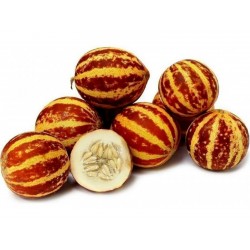
Semena tygřího melounu
Cena
4,95 €
SKU: V 46
Seeds Gallery Com,
5/
5
<meta http-equiv="Content-Type" content="text/html; charset=UTF-8" />
<h2><strong>Semena tygřího melounu</strong></h2>
<h2><span style="color: #ff0000;"><strong>Cena za balení 5 semen.</strong></span></h2>
<p>Vyznačuje se silnou a intenzivní exotickou chutí a vůní a je také velmi dekorativní. Plody malé velikosti váží 150-450 g. Rostliny tygřího melounu mohou na vinici přinést až dvacet melounů. Nejúžasnější meloun, který jsme vyrostli.</p>
<p>Hladká kůra tygřích melounů má vertikální variace rezavě oranžové a žluté. Krémová, bělavá dužina melounu je šťavnatá a sladká s chutí srovnatelnou s chutí asijské hrušky a melounu. Jako většina druhů muškátu nabízí vysoce aromatickou vůni a je známo, že parfémuje celou místnost, ve které se nacházejí, když je na vrcholu zralosti. Tygří melouny dorostou přibližně do velikosti softballu a po úplném dospělosti budou vážit skromnou libru.</p>
<p>Tiggerův meloun byl původně objeven ve starověké západní Arménii poblíž řeky Tigris. Jako většina odrůd melounů preferuje teplé až horké letní dny v mírných a středomořských oblastech. Pěstování na popínavých vinných révách je díky malé velikosti melounu Tigger ideální pro treling, který umožňuje pěstování v relativně malých prostorech.</p>
V 46 (5 S)

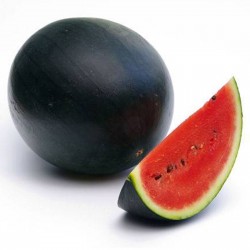
Black Sweet Watermelon Seeds
Cena
2,50 €
SKU: V 134 B
Seeds Gallery Com,
5/
5
<h2 class=""><strong>Black Sweet Watermelon Seeds</strong></h2>
<h2><span style="color: #ff0000;" class=""><strong>Price for Package of 25 (1g) seeds.</strong></span></h2>
<div>The finest seeds through the finest seed selecting process with our leading technology to ensure the quality of the seeds with firm vigor, great disease tolerance as well as very high germination</div>
<div>Common Name: Black Sweet Watermelon Seeds</div>
<div>Scientific Name: Citrullus vulgaris Schrad</div>
<div>Soil: Any soil</div>
<div>Water: morning and evening</div>
<div>Fertilizer: 15-15-15</div>
<div>Harvest: - days</div>
<div>
<p>% Purity : 100</p>
</div>
<div>% Germ.: 89</div><script src="//cdn.public.n1ed.com/G3OMDFLT/widgets.js"></script>
V 134 B (25 S)


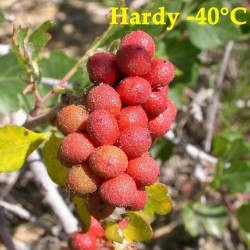
Skunkbush Sumac Seeds (rhus...
Cena
2,90 €
SKU: V 49
Seeds Gallery Com,
5/
5
<h2><strong>Skunkbush Sumac Seeds (rhus trilobata) </strong><strong>Exotic Fruit<br /></strong></h2>
<h2><span style="color: #ff0000;"><strong>Price for Package of 5 seeds.</strong></span></h2>
<p>A low deciduous shrub that offers attractive flowers in spring and bright fruits and foliage in fall, skunkbush sumac is native to western North America. In mid-spring before the leaves emerge, conspicuous clusters of pale yellow flowers appear at the stem tips. Small berries follow, ripening red in late summer. Resembling poison ivy foliage, the downy three-lobed leaves are mildly glossy and medium to dark green. The leaflets have blunt-toothed edges. Bruised leaves release a malodorous scent. In autumn, the foliage turns fiery colors. </p>
<p>Skunkbush sumac does best in full sun and moderately moist soil, with the brightest autumn color produced under such conditions. In drier soil plants are smaller. Use this extremely hardy shrub as a loose low screen at the edge of a woodland or building, or to clothe a bank or other erosion-prone site. Plants may sucker and form a thicket in some conditions.</p>
<p>Genus: Rhus </p>
<p>Species: trilobata</p>
<p>Common Name: Skunkbush Sumac</p>
<p>Other Name: Schamltzia trilobata, Rhus Canadensis var. Trilobata, Quailbush</p>
<p>Pre-treatment: required</p>
<p>Zone Hardiness Cold: 4</p>
<p>Zone Hardiness warm: 7</p>
<p>Plant Type: Small Shrub</p>
<p>Height / Width: 1-2m/2-3m</p>
<p>Growth rate: medium</p>
<p>Vegetation type: decidious</p>
<p>Leaf /Flower color: green/yellow-green</p>
<p>Light</p>
<p>Conditions : Light Conditions </p>
<p>Unless a site is completely exposed, light conditions will change during the day and even during the year. The northern and eastern sides of a house receive the least amount of light, with the northern exsposure being the shadiest. The western and southern sides of a house receive the most light and are conidered the hottest exposures due to intense afternoon sun.</p>
<p>You will notice that sun and shade patterns change during the day. The western side of a house may even be shady due to shadows cast by large trees or a structure from an adjacent property. If you have just bought a new home or just beginning to garden in your older home, take time to map sun and shade throughout the day. You will get a more accurate feel for your site's true light conditions.</p>
<p>Conditions : Full to Partial Sun </p>
<p>Full sunlight is needed for many plants to assume their full potential. Many of these plants will do fine with a little less sunlight, although they may not flower as heavily or their foliage as vibrant. Areas on the southern and western sides of buildings usually are the sunniest. The only exception is when houses or buildings are so close together, shadows are cast from neighboring properties. Full sun usually means 6 or more hours of direct unobstructed sunlight on a sunny day. Partial sun receives less than 6 hours of sun, but more than 3 hours. Plants able to take full sun in some climates may only be able to tolerate part sun in other climates. Know the culture of the plant before you buy and plant it!</p>
<p>Watering</p>
<p>Conditions : Moist and Well Drained </p>
<p>Moist and well drained means exactly what it sounds like. Soil is moist without being soggy because the texture of the soil allows excess moisture to drain away. Most plants like about 1 inch of water per week. Amending your soil with compost will help improve texture and water holding or draining capacity. A 3 inch layer of mulch will help to maintain soil moisture and studies have shown that mulched plants grow faster than non-mulched plants.</p>
<p>Planting</p>
<p>How-to : Planting Shrubs </p>
<p>Dig a hole twice the size of the root ball and deep enough to plant at the same level the shrub was in the container. If soil is poor, dig hole even wider and fill with a mixture half original soil and half compost or soil amendment.</p>
<p>Carefully remove shrub from container and gently separate roots. Position in center of hole, best side facing forward. Fill in with original soil or an amended mixture if needed as described above. For larger shrubs, build a water well. Finish by mulching and watering well.</p>
<p>If the plant is balled-and-burlapped, remove fasteners and fold back the top of natural burlap, tucking it down into hole, after you've positioned shrub. Make sure that all burlap is buried so that it won't wick water away from rootball during hot, dry periods. If synthetic burlap, remove if possible. If not possible, cut away or make slits to allow for roots to develop into the new soil. For larger shrubs, build a water well. Finish by mulching and watering well.</p>
<p>If shrub is bare-root, look for a discoloration somewhere near the base; this mark is likely where the soil line was. If soil is too sandy or too clayey, add organic matter. This will help with both drainage and water holding capacity. Fill soil, firming just enough to support shrub. Finish by mulching and watering well.</p>
<p>Problems</p>
<p>Diseases : Verticillium or Fusarium Wilt </p>
<p>Wilts may be contracted through infected seed, plant debris, or soil. This fungus begins and multiplies during the cool, moist season, becoming obvious when weather turns warm and dry. Plants wilt because the fungus damages their water conducting mechanisms. Overfertilization can worsen this problem. Able to overwinter in soil for many years, it is also carried and harbored in common weeds.</p>
<p>Prevention and Control: If possible, select resistant varieties. Keep nitrogen-heavy fertilizers to a minimum as well as over-irrigating as they encourage lush growth. Practice crop rotation and prune out or better yet remove infected plants.</p>
<p>Fungi : Powdery Mildew </p>
<p>Powdery Mildew is usually found on plants that do not have enough air circulation or adequate light. Problems are worse where nights are cool and days are warm and humid. The powdery white or gray fungus is usually found on the upper surface of leaves or fruit. Leaves will often turn yellow or brown, curl up, and drop off. New foliage emerges crinkled and distorted. Fruit will be dwarfed and often drops early.</p>
<p>Prevention and Control: Plant resistant varieties and space plants properly so they receive adequate light and air circulation. Always water from below, keeping water off the foliage. This is paramount for roses. Go easy on the nitrogen fertilizer. Apply fungicides according to label directions before problem becomes severe and follow directions exactly, not missing any required treatments. Sanitation is a must - clean up and remove all leaves, flowers, or debris in the fall and destroy.</p>
<p>Pest : Caterpillars </p>
<p>Caterpillars are the immature form of moths and butterflies. They are voracious feeders attacking a wide variety of plants. They can be highly destructive and are characterized as leaf feeders, stem borers, leaf rollers, cutworms and tent-formers.</p>
<p>Prevention and Control: keep weeds down, scout individual plants and remove caterpillars, apply labeled insecticides such as soaps and oils, take advantage of natural enemies such as parasitic wasps in the garden and use Bacillus thuringiensis (biological warfare) for some caterpillar species.</p>
<p>Fungi : Leaf Spots </p>
<p>Leaf spots are caused by fungi or bacteria. Brown or black spots and patches may be either ragged or circular, with a water soaked or yellow-edged appearance. Insects, rain, dirty garden tools, or even people can help its spread.</p>
<p>Prevention and Control: Remove infected leaves when the plant is dry. Leaves that collect around the base of the plant should be raked up and disposed of. Avoid overhead irrigation if possible; water should be directed at soil level. For fungal leaf spots, use a recommended fungicide according to label directions.</p>
<p>Pest : Scale Insects </p>
<p>Scales are insects, related to mealybugs, that can be a problem on a wide variety of plants - indoor and outdoor. Young scales crawl until they find a good feeding site. The adult females then lose their legs and remain on a spot protected by its hard shell layer. They appear as bumps, often on the lower sides of leaves. They have piercing mouth parts that suck the sap out of plant tissue. Scales can weaken a plant leading to yellow foliage and leaf drop. They also produce a sweet substance called honeydew (coveted by ants) which can lead to an unattractive black surface fungal growth called sooty mold.</p>
<p>Prevention and Control: Once established they are hard to control. Isolate infested plants away from those that are not infested. Cosnult your local garden center professional or Cooperative Extension office in your county for a legal recommendation regarding their control. Encourage natural enemies such as parasitic wasps in the garden.</p>
<p>Miscellaneous</p>
<p>Conditions : Deer Tolerant </p>
<p>There are no plants that are 100% deer resistant, but many that are deer tolerant. There are plants that deer prefer over others. You will find that what deer will or will not eat varies in different parts of the country. A lot of it has to do with how hungry they are. Most deer will sample everything at least once, decide if they like it or not and return if favorable. A fence is the good deer barrier. You may go for a really tall one (7 to 8 feet), or try 2 parallel fences, (4 to 5 feet apart). Use a wire mesh fence rather than board, since deer are capable of wiggling through a 12 inch space.</p>
<p>Conditions : Pollution Tolerant </p>
<p>Air pollution is becoming a bigger problem each day. Pollutants in our air damage plants. The plants are damaged by absorbing sulfur dioxide, ozone, peroxyacetyl nitrate, ethylene, and nitrogen dioxide through their pores. Cell membrane damage may result in leaf drop, blotched or burnt looking leaves, or off-colored tissue between veins. Vehicles and industrial processes are the key culprits and conditions worsen on hot summer days. Though planting only pollution tolerant plants is not the solution to this problem, it is a visual bandaid. Your Cooperative Extension Service may have a list of plants that are more pollution tolerant in your area. </p>
<p>Conditions : Rabbit Tolerant </p>
<p>As cute as they are, rabbits can really damage a vegetable garden. Young, tender lettuce plants seem to be their favorite. If a free-roaming dog is not a possiblility for you, consider installing raised vegetable beds and covering tender shoots with netting. If you have ample room, you can opt to plant enough for you and the bunnies. Scents don't always repel animals, as they get used to them and are often washed off in the rain. </p>
<p>Conditions : Slope Tolerant </p>
<p>Slope tolerant plants are those that have a fibrous root system and are often plants that prefer good soil drainage. These plants assist in erosion control by stabilizing/holding the soil on slopes intact. </p>
<p>Conditions : Wind Tolerant </p>
<p>Plants that are wind tolerant usually have flexible, strong branches that are not brittle. Wind tolerant plants often have thick or waxy leaves that control moisture loss from whipping winds. Native plants are often the best adapted to not only wind, but also soil and other climatic conditions. </p>
<p>Conditions : Fall Color </p>
<p>Fall color is the result of trees or shrubs changing colors according to complex chemical formulas present in their leaves. Depending on how much iron, magnesium, phosphorus, or sodium is in the plant, and the acidity of the chemicals in the leaves, leaves might turn amber, gold, red, orange or just fade from green to brown. Scarlet oaks, red maples and sumacs, for instance, have a slightly acidic sap, which causes the leaves to turn bright red. The leaves of some varieties of ash, growing in areas where limestone is present, will turn a regal purplish-blue.</p>
<p>Although many people believe that cooler temperatures are responsible for the color change, the weather has nothing to do with it at all. As the days grow shorter and the nights longer, a chemical clock inside the trees starts up, releasing a hormone which restricts the flow of sap to each leaf. As fall progresses, the sap flow slows and chlorophyll, the chemical that gives the leaves their green color in the spring and summer, disappears. The residual sap becomes more concentrated as it dries, creating the colors of fall. </p>
<p>Glossary : Deciduous </p>
<p>Deciduous refers to those plants that lose their leaves or needles at the end of the growing season.</p>
<p>Glossary : Shrub </p>
<p>Shrub: is a deciduous or evergreen woody perennial that has multiple branches that form near its base. </p>
<p>Glossary : Heat Zone </p>
<p>The 12 zones of the AHS Heat Zone map indicate the average number of days each year that a given region experiences ""heat days"" or temperatures over 86 degrees F(30 degrees Celsius). That is the point at which plants begin suffering physiological damage from heat. The zones range from Zone 1 (less than one heat day) to Zone 12 (more than 210 heat days). The AHS Heat Zone, which deals with heat tolerance, should not be confused with the USDA Hardiness Zone system which deals with cold tolerance. For example: Seattle, Washington has a USDA Hardiness Zone of 8, the same as Charleston, South Carolina; however Seattle's Heat Zone is 2 where Charleston's Heat Zone is 11. What this says is that winter temperature in the two cities may be similar, but because Charleston has significantly warmer weather for a longer period of time, plant selection based on heat tolerance is a factor to consider. </p>
<p>Glossary : Plant Characteristics </p>
<p>Plant characteristics define the plant, enabling a search that finds specific types of plants such as bulbs, trees, shrubs, grass, perennials, etc. </p>
<p>Glossary : Medium Shrub </p>
<p>A medium shrub is generally between 3 and 6 feet tall. </p>
<p>Glossary : Flower Characteristics </p>
<p>Flower characteristics can vary greatly and may help you decide on a ""look or feel"" for your garden. If you're looking for fragrance or large, showy flowers, click these boxes and possibilities that fit your cultural conditions will be shown. If you have no preference, leave boxes unchecked to return a greater number of possibilities. </p>
<p>Glossary : Foliage Characteristics </p>
<p>By searching foliage characteristics, you will have the opportunity to look for foliage with distinguishable features such as variegated leaves, aromatic foliage, or unusual texture, color or shape. This field will be most helpful to you if you are looking for accent plants. If you have no preference, leave this field blank to return a larger selection of plants. </p>
<div> </div>
<table border="1" cellspacing="0" cellpadding="0">
<tbody>
<tr>
<td colspan="2" valign="top" width="100%">
<p><span style="color: #008000;"><strong>Sowing Instructions</strong></span></p>
</td>
</tr>
<tr>
<td valign="top" nowrap="nowrap">
<p><span style="color: #008000;"><strong>Propagation:</strong></span></p>
</td>
<td valign="top">
<p><span style="color: #008000;">Seeds</span></p>
</td>
</tr>
<tr>
<td valign="top" nowrap="nowrap">
<p><span style="color: #008000;"><strong>Pretreat:</strong></span></p>
</td>
<td valign="top">
<p><span style="color: #008000;">pour over with hot water + Soak about 24 hrs</span></p>
</td>
</tr>
<tr>
<td valign="top" nowrap="nowrap">
<p><span style="color: #008000;"><strong>Stratification:</strong></span></p>
</td>
<td valign="top">
<p><span style="color: #008000;">0</span></p>
</td>
</tr>
<tr>
<td valign="top" nowrap="nowrap">
<p><span style="color: #008000;"><strong>Sowing Time:</strong></span></p>
</td>
<td valign="top">
<p><span style="color: #008000;">all year round</span></p>
</td>
</tr>
<tr>
<td valign="top" nowrap="nowrap">
<p><span style="color: #008000;"><strong>Sowing Depth:</strong></span></p>
</td>
<td valign="top">
<p><span style="color: #008000;">Just lightly cover with substrate</span></p>
</td>
</tr>
<tr>
<td valign="top" nowrap="nowrap">
<p><span style="color: #008000;"><strong>Sowing Mix:</strong></span></p>
</td>
<td valign="top">
<p><span style="color: #008000;">Coir or sowing mix + sand or perlite</span></p>
</td>
</tr>
<tr>
<td valign="top" nowrap="nowrap">
<p><span style="color: #008000;"><strong>Germination temperature:</strong></span></p>
</td>
<td valign="top">
<p><span style="color: #008000;">min. 20 ° C</span></p>
</td>
</tr>
<tr>
<td valign="top" nowrap="nowrap">
<p><span style="color: #008000;"><strong>Location:</strong></span></p>
</td>
<td valign="top">
<p><span style="color: #008000;">bright + keep constantly moist not wet</span></p>
</td>
</tr>
<tr>
<td valign="top" nowrap="nowrap">
<p><span style="color: #008000;"><strong>Germination Time:</strong></span></p>
</td>
<td valign="top">
<p><span style="color: #008000;">until it germinates </span></p>
</td>
</tr>
<tr>
<td valign="top" nowrap="nowrap">
<p><span style="color: #008000;"><strong>Watering:</strong></span></p>
</td>
<td valign="top">
<p><span style="color: #008000;">Water regularly during the growing season</span></p>
</td>
</tr>
<tr>
<td valign="top" nowrap="nowrap">
<p><span style="color: #008000;"><strong> </strong></span></p>
</td>
<td valign="top">
<p><br /><span style="color: #008000;"><em>Copyright © 2012 Seeds Gallery - Saatgut Galerie - Galerija semena. </em><em>All Rights Reserved.</em><em></em></span></p>
<div><span style="color: #008000;"><em> </em></span></div>
</td>
</tr>
</tbody>
</table>
V 49 (5 S)


Best seller product

This plant is resistant to winter and frost.

This plant is resistant to winter and frost.

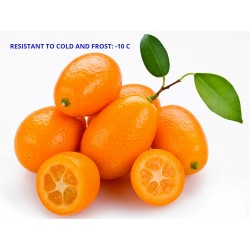
Kumquats or cumquats Seeds...
Cena
2,95 €
SKU: V 50
Seeds Gallery Com,
5/
5
<h2><span style="color: #000000; font-size: 14pt;" class=""><strong>Kumquats or cumquats Seeds - exotic tropical fruit</strong></span></h2>
<h3><span style="color: #ff0000; font-size: 14pt;"><strong>Price for Package of 5 seeds.</strong></span></h3>
<p><span style="font-size: 10pt;">Kumquats or cumquats are a group of small fruit-bearing trees in the flowering plant family Rutaceae, either forming the genus Fortunella, or placed within Citrus sensulato. The edible fruit closely resembles that of the orange (Citrus sinensis), but it is much smaller and ovular, being approximately the size and shape of an olive. The English name "kumquat" derives from the Cantonese pronunciation gam1 gwat1 (given in Jyutping romanization).</span></p>
<p><span style="font-size: 10pt;">They are slow-growing evergreen shrubs or short trees, from 2.5 to 4.5 meters (8 to 15 ft) tall, with dense branches, sometimes bearing small thorns. The leaves are dark glossy green, and the flowers white, similar to other citrus flowers, borne singly or clustered in the leaf-axils. Depending on size, the kumquat tree can produce hundreds or even thousands of fruits each year.[1] The tree can be hydrophytic, with the fruit often found floating on water near shore during the ripe season.[citation needed]</span></p>
<div><span style="font-size: 10pt;">The plant is native to south Asia and the Asia-Pacific region. The earliest historical reference to kumquats appears in literature of China in the 12th century. They have long been cultivated in Japan, Taiwan, the Philippines, and southeast Asia. They were introduced to Europe in 1846 by Robert Fortune, collector for the London Horticultural Society, and shortly thereafter into North America.</span></div>
<div><span style="font-size: 10pt;">Classification</span></div>
<div><span style="font-size: 10pt;">Carl Peter Thunberg originally classified the kumquats as Citrus japonica in his 1784 book Flora Japonica. In 1915, Walter T. Swingle reclassified them in a segregate genus, Fortunella, named in honor of Robert Fortune. Seven species of Fortunella have generally been recognized—F. japonica, F. margarita, F. crassifolia, F. hindsii, F. obovataand F. polyandra, as well as the recently described F. bawangica . The Flora of China returns the kumquat to Citrus and combines the species into the single species as Citrus japonica.[2]</span></div>
<div><span style="font-size: 10pt;">Varieties :</span></div>
<div><span style="font-size: 10pt;">Round kumquat</span></div>
<div><span style="font-size: 10pt;">The round kumquat (also Marumi kumquat or Morgani kumquat) is an evergreen tree, producing edible golden-yellow colored fruit. The fruit is small and usually round but can be oval shaped. The peel has a sweet flavor but the fruit has a sour center. The fruit can be eaten cooked but is mainly used to make marmalade and jelly. It is grown as an ornamental plant and can be used in bonsai. This plant symbolizes good luck in China and other Asian countries, where it is sometimes given as a gift during the Lunar New Year. It's more commonly cultivated than most other kumquats as it is cold tolerant. It can be kept as a houseplant.</span></div>
<div><span style="font-size: 10pt;">When the kumquats are divided into multiple species the name Fortunella japonica (Citrus japonica) is retained by this group.</span></div>
<div><span style="font-size: 10pt;">Oval kumquat</span></div>
<div><span style="font-size: 10pt;">Fortunella margarita, also known as the oval kumquat or the Nagami kumquat, is a close relative to Citrus species. It is a small evergreen tree, that can reach more than 12 ft (4 m) high and 9 ft (3 m) large. It is native to southeastern Asia, and more precisely to China. The oval kumquat has very fragrant citrus-like white flowers, and small edible oval orange fruits. The oval kumquat is an ornamental little tree, with showy foliage, flowers and fruits. It is also fairly frost-hardy, and will withstand negative temperatures such as 14 °F (-10 °C), and even a little lower for very brief periods. It can be grown in USDA hardiness zones 9 and warmer, but can also be tried in sheltered places, in USDA hardiness zone 8. Unlike most citrus species, the oval kumquat has a shorter growth period, and goes into dormancy fairly earlier in autumn. This partly explains its better frost hardiness.</span></div>
<div><span style="font-size: 10pt;">Characteristics</span></div>
<div><span style="font-size: 10pt;">The evergreen leaves of oval kumquats are deep-green and relatively small. They can reach up to 3 in (7 cm) long and 1.5 in (3.5 cm) wide. The white flowers of the oval kumquat are similar to the citrus flowers. They are strongly perfumed, and they appear relatively late in the growing season, generally late spring.</span></div>
<div><span style="font-size: 10pt;">The oval kumquat is a fruit that looks like any citrus fruit, with an orange rind. The fruits are oblong, up to 2 in (5 cm) long. Unlike the common citrus, which have a rind which is inedible raw, oval kumquats have an edible sweet rind. The flesh, however, is not as sweet as the rind, and the juice is quite acidic and sour, with a lemon-like flavor. This fruit is generally eaten fresh, with its rind. It can also be processed into preserves, jams, and other products.</span></div>
<div><span style="font-size: 10pt;">Cultivation</span></div>
<div><span style="font-size: 10pt;">The oval kumquat needs a well-drained and fertile ground. It dislikes alkaline soils. The oval kumquat is susceptible to common citrus pests and diseases.</span></div>
<div><span style="font-size: 10pt;">Jiangsu kumquat</span></div>
<div><span style="font-size: 10pt;">The Jiangsu kumquat or Fukushu kumquat bears edible fruit that can be eaten raw. The fruit can be made into jelly and marmalade. The fruit can be round or bell shaped; it is bright orange when fully ripe. It may also be distinguished from other kumquats by its round leaves that make this species unique within the genus. It is grown for its edible fruit and as an ornamental plant. It cannot withstand frost.</span></div>
<div><span style="font-size: 10pt;">When the kumquats are divided into multiple species the name Fortunella obovata (Citrus obovata) is used for this group.</span></div>
<div><span style="font-size: 10pt;">Cultivation and uses</span></div>
<div><span style="font-size: 10pt;">Kumquats are cultivated in China, South Korea, North Korea, Taiwan, Southeast Asia, Japan, the Middle East, Europe (notably Corfu, Greece), southern Pakistan, and the southern United States (notably Florida, Louisiana, Alabama) and California.</span></div>
<div><span style="font-size: 10pt;">They are much hardier than other citrus plants such as oranges. The 'Nagami' kumquat requires a hot summer, ranging from 25 °C to 38 °C (77 °F to 100 °F), but can withstand frost down to about −10 °C (14 °F) without injury. They grow in the tea hills of Hunan, China, where the climate is too cold for other citrus fruits, even the Mikan (also known as the Satsuma) orange. The trees differ also from other citrus species in that they enter into a period of winter dormancy so profound that they will remain in it through several weeks of subsequent warm weather without putting out new shoots or blossoms. Despite their ability to survive low temperatures, kumquat trees grow better and produce larger and sweeter fruits in warmer regions.</span></div>
<div><span style="font-size: 10pt;">Uses</span></div>
<div><span style="font-size: 10pt;">Kumquats are often eaten raw. As the rind is sweet and the juicy center is sour, the raw fruit is usually consumed either whole—to savor the contrast—or only the rind is eaten. The fruit is considered ripe when it reaches a yellowish-orange stage and has just shed the last tint of green.</span></div>
<div><span style="font-size: 10pt;">Culinary uses include candying and kumquat preserves, marmalade, and jelly. Kumquats can also be sliced and added to salads. In recent years kumquats have gained popularity as a garnish for cocktail beverages, including the martini as a replacement for the more familiar olive. A kumquat liqueur mixes the fruit with vodka or other clear spirit. Kumquats are also being used by chefs to create a niche for their desserts and are common in European countries.</span></div>
<div><span style="font-size: 10pt;">The Cantonese often preserve kumquats in salt or sugar. A batch of the fruit is buried in dry salt inside a glass jar. Over time, all the juice from the fruit is diffused into the salt. The fruit in the jar becomes shrunken, wrinkled, and dark brown in color, and the salt combines with the juice to become a dark brown brine. A few salted kumquats with a few teaspoons of the brine/juice may be mixed with hot water to make a remedy for sore throats.[citation needed] A jar of such preserved kumquats can last several years and still keep its flavor.[citation needed]</span></div>
<div><span style="font-size: 10pt;">In the Philippines and Taiwan, kumquats are a popular addition to green tea and black tea, either hot or iced.</span></div>
<div><span style="font-size: 10pt;">In Vietnam, kumquat bonsai trees (round kumquat plant) are used as a decoration for the Tết (Lunar New Year) holiday. Kumquat fruits are also boiled or dried to make a candied snack called mứt quất.</span></div>
<div>
<div>
<div>
<table cellspacing="0" cellpadding="0" border="1">
<tbody>
<tr>
<td colspan="2" width="100%" valign="top">
<p><span style="color: #008000; font-size: 10pt;"><strong>Sowing Instructions</strong></span></p>
</td>
</tr>
<tr>
<td valign="top" nowrap="nowrap">
<p><span style="color: #008000; font-size: 10pt;"><strong>Propagation:</strong></span></p>
</td>
<td valign="top">
<p><span style="color: #008000; font-size: 10pt;">Seeds</span></p>
</td>
</tr>
<tr>
<td valign="top" nowrap="nowrap">
<p><span style="color: #008000; font-size: 10pt;"><strong>Pretreat:</strong></span></p>
</td>
<td valign="top">
<p><span style="color: #008000; font-size: 10pt;">0</span></p>
</td>
</tr>
<tr>
<td valign="top" nowrap="nowrap">
<p><span style="color: #008000; font-size: 10pt;"><strong>Stratification:</strong></span></p>
</td>
<td valign="top">
<p><span style="color: #008000; font-size: 10pt;">0</span></p>
</td>
</tr>
<tr>
<td valign="top" nowrap="nowrap">
<p><span style="color: #008000; font-size: 10pt;"><strong>Sowing Time:</strong></span></p>
</td>
<td valign="top">
<p><span style="color: #008000; font-size: 10pt;"> all year round </span></p>
</td>
</tr>
<tr>
<td valign="top" nowrap="nowrap">
<p><span style="color: #008000; font-size: 10pt;"><strong>Sowing Depth:</strong></span></p>
</td>
<td valign="top">
<p><span style="color: #008000; font-size: 10pt;">0.5-1 cm</span></p>
</td>
</tr>
<tr>
<td valign="top" nowrap="nowrap">
<p><span style="color: #008000; font-size: 10pt;"><strong>Sowing Mix:</strong></span></p>
</td>
<td valign="top">
<p><span style="color: #008000; font-size: 10pt;">Coir or sowing mix + sand or perlite</span></p>
</td>
</tr>
<tr>
<td valign="top" nowrap="nowrap">
<p><span style="color: #008000; font-size: 10pt;"><strong>Germination temperature:</strong></span></p>
</td>
<td valign="top">
<p><span style="color: #008000; font-size: 10pt;">min. 20° C.</span></p>
</td>
</tr>
<tr>
<td valign="top" nowrap="nowrap">
<p><span style="color: #008000; font-size: 10pt;"><strong>Location:</strong></span></p>
</td>
<td valign="top">
<p><span style="color: #008000; font-size: 10pt;">bright + keep constantly moist not wet</span></p>
</td>
</tr>
<tr>
<td valign="top" nowrap="nowrap">
<p><span style="color: #008000; font-size: 10pt;"><strong>Germination Time:</strong></span></p>
</td>
<td valign="top">
<p><span style="color: #008000; font-size: 10pt;">Until it Germinates 7days - 2 Months</span></p>
</td>
</tr>
<tr>
<td valign="top" nowrap="nowrap">
<p><span style="color: #008000; font-size: 10pt;"><strong>Watering:</strong></span></p>
</td>
<td valign="top">
<p><span style="color: #008000; font-size: 10pt;">Water regularly during the growing season</span></p>
</td>
</tr>
<tr>
<td valign="top" nowrap="nowrap">
<p><span style="color: #008000; font-size: 10pt;"><strong> </strong></span></p>
</td>
<td valign="top">
<p><br><span style="color: #008000; font-size: 10pt;">Seeds Gallery 05.11.2012.</span></p>
</td>
</tr>
</tbody>
</table>
</div>
</div>
</div>
V 50 N


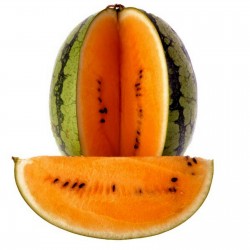
Orange Watermelon Seeds...
Cena
2,25 €
SKU: V 51
Seeds Gallery Com,
5/
5
<h2><strong>Orange Watermelon Seeds "Tendersweet"</strong></h2>
<h2><span style="color: #ff0000;"><strong>Price for Package of 10 seeds.</strong></span></h2>
<p>Watermelon Yellow Orange is an unusual and very attractive watermelon. This highly prized variety which has pure orange flesh inside not only tastes great, it looks fabulous as well, the perfect complement to the standard red-fleshed types such as Sugar Baby. The flesh which is very sweet sometimes gives the impression of being bland but this is only because of the colour</p>
<p>Watermelon Orange Flesh produces firm, good quality and evenly shaped fruit on a bushy plant</p>
<p>Heavy for their size the melons which can weigh anything from 3.5 - 5.5 kilos have a superb watermelon flavour and are highly rated. Can be cultivated outdoors but gives the best results in the British Isles when grown under protection.</p><script src="//cdn.public.n1ed.com/G3OMDFLT/widgets.js"></script>
V 51 (10 S)

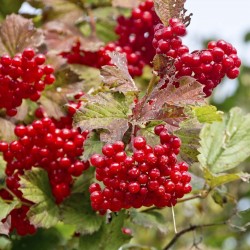
Semena brusinky americké...
Cena
2,45 €
SKU: V 52
Seeds Gallery Com,
5/
5
<!DOCTYPE html>
<html>
<head>
<meta http-equiv="Content-Type" content="text/html; charset=UTF-8" />
</head>
<body>
<h2><strong>Semena brusinky americké (Viburnum trilobum)</strong></h2>
<h2><span style="color: #ff0000;"><strong>Cena za balení 10 semen.</strong></span></h2>
<p>Odolný, přizpůsobivý, snadno se pěstuje, nápadné květiny, barva podzimu, nápadné jedlé ovoce, přitahuje ptáky a motýly, krmivo / přístřešek pro divoké zvěře, hranice živých plotů a keřů, bonsaje, chlad, teplo, sucho a vítr.</p>
<p>American Highbush Cranberry nesouvisí se skutečnými brusinkami; název pochází z jeho koláče, jedlých červených plodů.</p>
<p>Americká Highbush Cranberry pochází z bažinatých lesů, bažin, okrajů jezer, pastvin, houštin, svahů a vlhkých nízkých míst od New Brunswicku po Britskou Kolumbii na jih až po New York, Velká jezera, Jižní Dakota a Oregon. Je to opadavý keř se zaobleným, vzpřímeně se rozkládajícím a někdy klenutým zvykem. Obvykle roste na 10 až 15 stop vysoký. Listy jsou trojlaločné, javorové, lesklé, tmavě zelené, na podzim se stávají atraktivní žlutě červenou nebo červenofialovou. Na jaře má vnější kroužek ze 3/4 palců bílých sterilních květů obklopujících úrodné, ale nenápadné vnitřní květy, ve 3palcovém shluku s plochým vrcholem. Po květinách následují na podzim klesající shluky brusinkovitých jasně červených 1/4 palců jedlých bobulí (peckovice). Bobule jsou čerstvé čerstvé keře a jsou mnohem méně hořké než bobule nalezené na Viburnum opulus.</p>
<p>Bobule se někdy používají k výrobě džemů a želé.</p>
</body>
</html>
V 52 (10 S)






